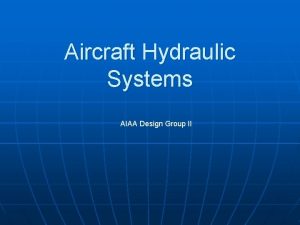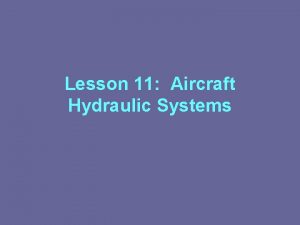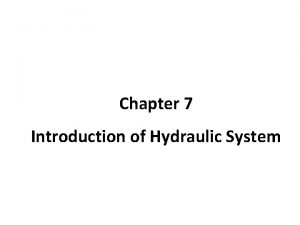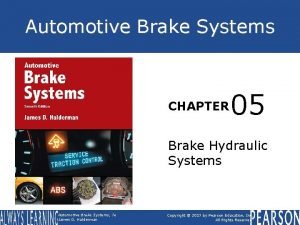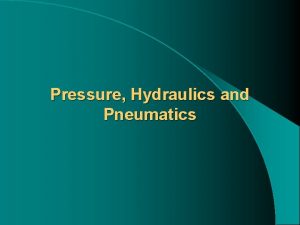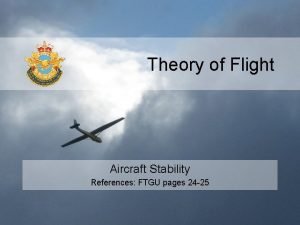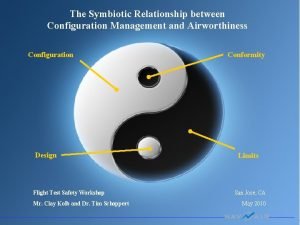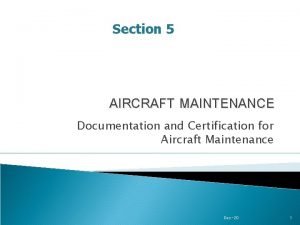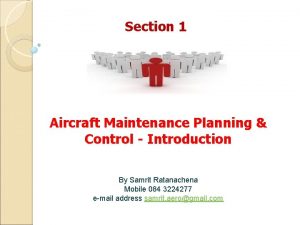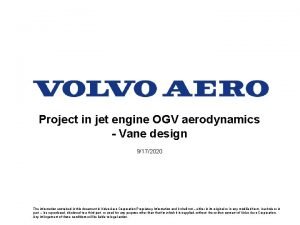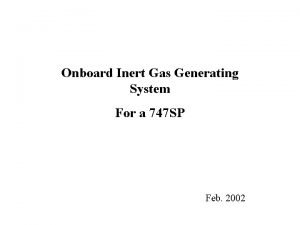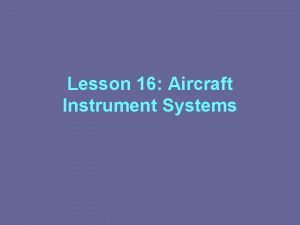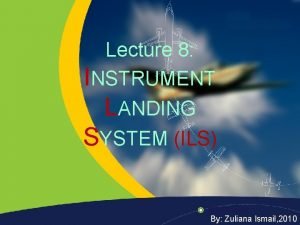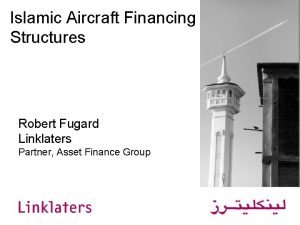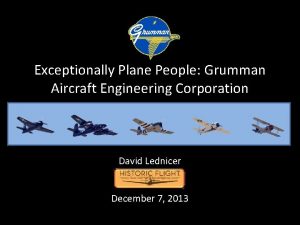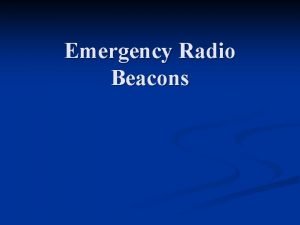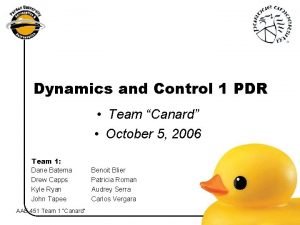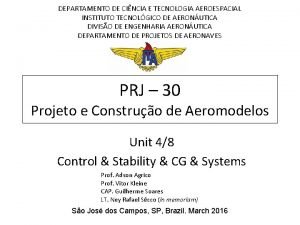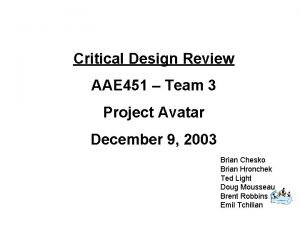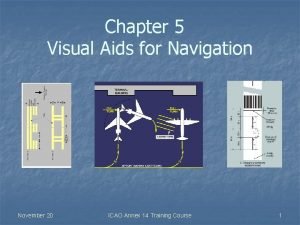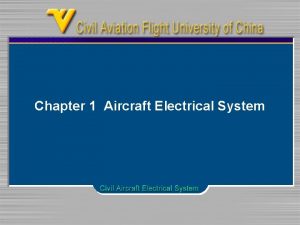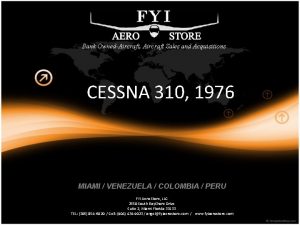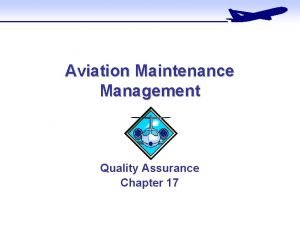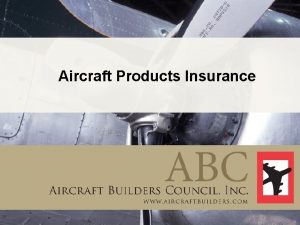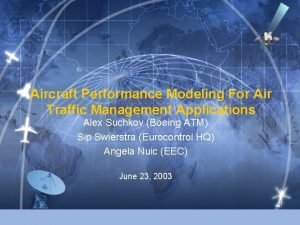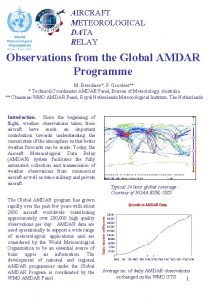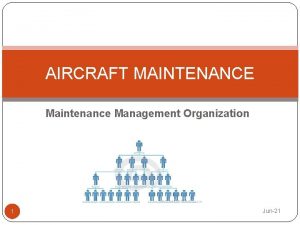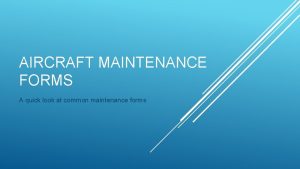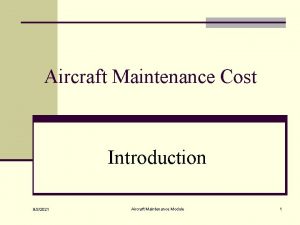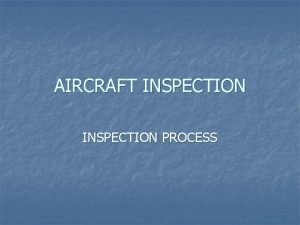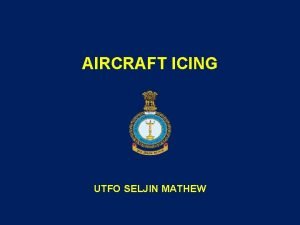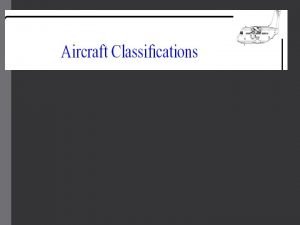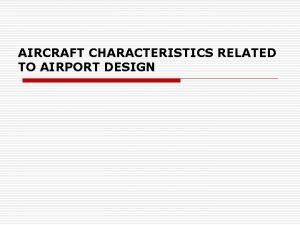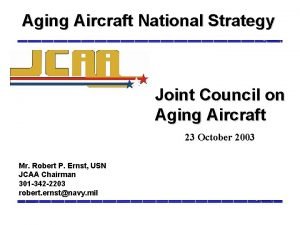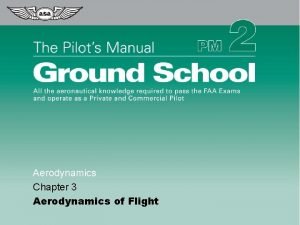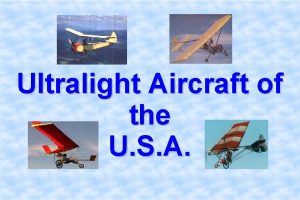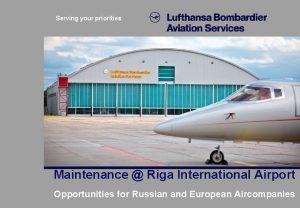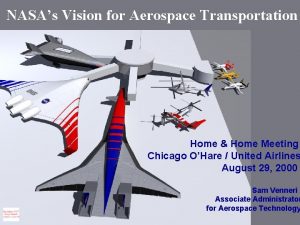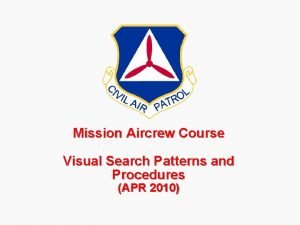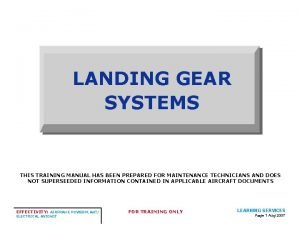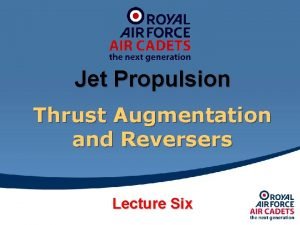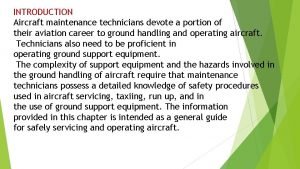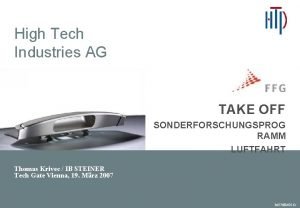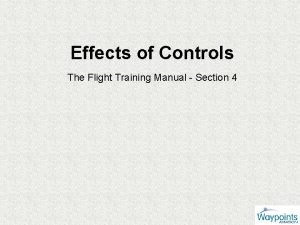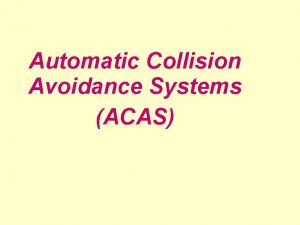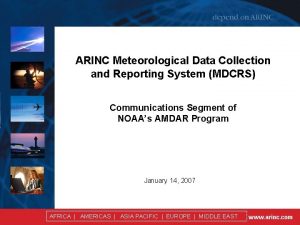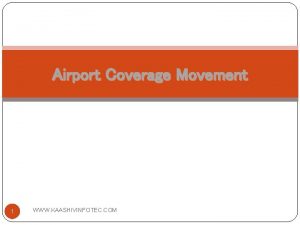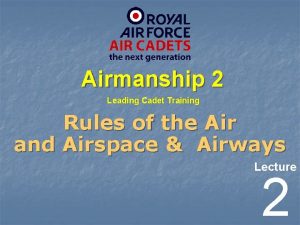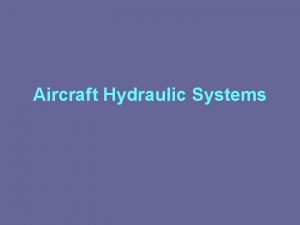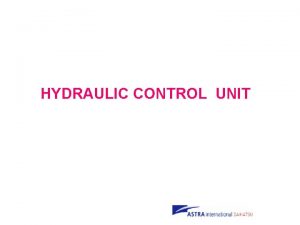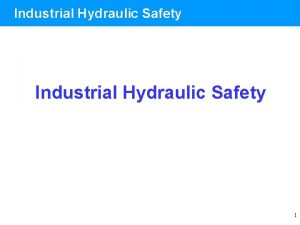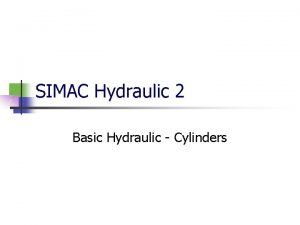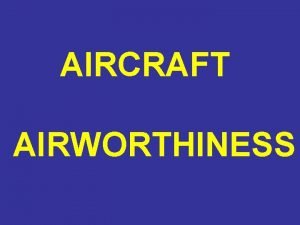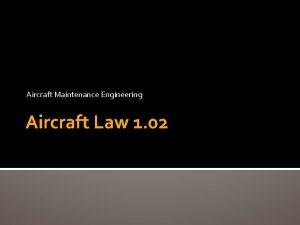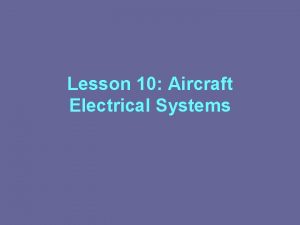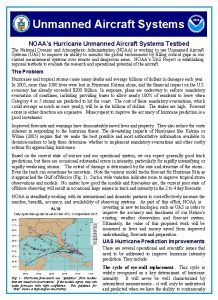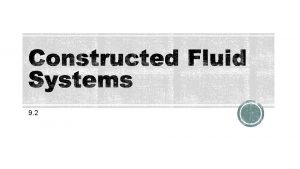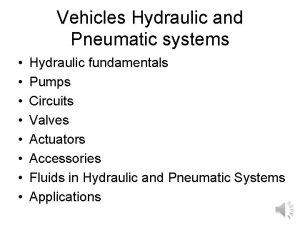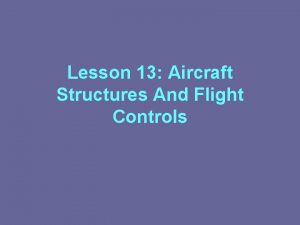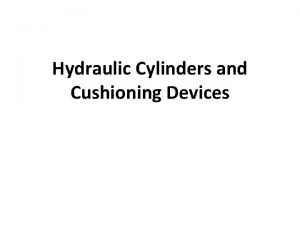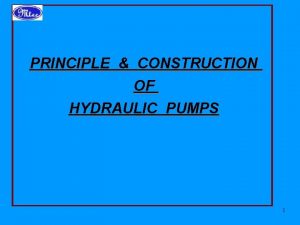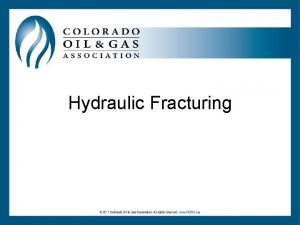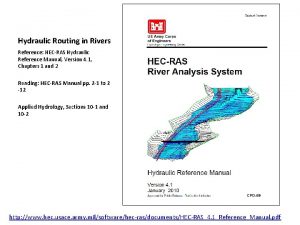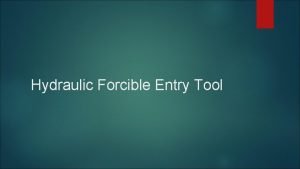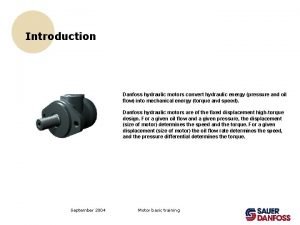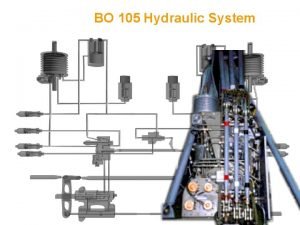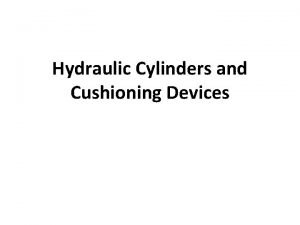Lesson 11 Aircraft Hydraulic Systems Aircraft Hydraulic Systems


















































- Slides: 50

Lesson 11: Aircraft Hydraulic Systems

Aircraft Hydraulic Systems • The Average modern aircraft utilizes hydraulic systems to operate several systems. • • Landing gear Wing flaps Speed and wheel brakes Flight controls

Aircraft Hydraulic Systems • Pascal’s Law • Pressure exerted on a fluid in an enclosed container is transmitted equally and undiminished to all parts of the container and acts as right angles to the enclosing walls.

Aircraft Hydraulic Systems • Hydrostatic Paradox • The pressure exerted by a column of liquid is determined by the height of the column and is independent of its volume.

Aircraft Hydraulic Systems • Neither the shape nor the volume of a container affects the pressure. Only the height of the column does this.

Changes In Velocity and Pressure (Bernoulli) • When a fluid or gas is supplied at a constant flow rate through a duct, the sum of the pressure energy and velocity energy is constant. • If pressure increases, velocity decreases proportionally or, if pressure decreases, velocity increases proportionally. • Kinetic Energy = Velocity (Ram Pressure) • Potential Energy = Pressure (Static Pressure)

Changes In Velocity and Pressure (Bernoulli)

Aircraft Hydraulic Systems • Relationship Between Pressure, Force, And Area • Pressure is a measure of the amount of force that acts on a unit of area. • Pressure is measured in pounds per square inch (psi). • Force = Pressure x Area

Aircraft Hydraulic Systems • Relationship Between Pressure, Force, And Area

Aircraft Hydraulic Systems • Relationship Between Area, Distance, And Volume • The area of the piston, the distance it moves, and the volume of the fluid displaced. • Volume = Area x Distance

Aircraft Hydraulic Systems • Relationship Between Area, Distance, And Volume

Aircraft Hydraulic Systems • Mechanical Advantage In A Hydraulic System • Two major advantages – Ease with which force can be transmitted over large distances and into sealed compartments. – Large gain in mechanical advantage made possible by varying the size of pistons.

Aircraft Hydraulic Systems • Mechanical Advantage In A Hydraulic System

Aircraft Hydraulic Systems • Mechanical Advantage In A Hydraulic System • If a large amount of movement is need but only a small amount of force we can use a large piston to drive a smaller one. • The fluid moved by the large piston will enter the cylinder with the small piston and move it a distance equal to the volume of fluid divided by the area of the small piston.

Aircraft Hydraulic Systems • All hydraulic systems are essentially the same, whatever their function. • Regardless of application, each hydraulic system has a minimum number of components, and some type of hydraulic fluid.

Hydraulic Fluid • The fluid used in aircraft hydraulic systems is one of the system’s most important parts. • The fluid must flow with a minimum of opposition. • Must be incompressible • Good lubricating properties • Inhibit corrosion and not attack seals • Must not foam in operation

Hydraulic Fluid • Some characteristics that must be considered. • • Viscosity Chemical Stability Flash Point Fire Point

Hydraulic Fluid • Viscosity is the internal resistance to flow. • Gasoline flows easily (has a low viscosity) • Tar flows slowly (has a high viscosity) • A satisfactory liquid for a hydraulic system must have enough body t give a good seal at pumps, valves and pistons; but it must not be so thick that it offers excessive resistance to flow. • The average hydraulic liquid has a low viscosity.

Hydraulic Fluid • Chemical Stability is the ability of the liquid to resist oxidation and deterioration for long periods. • Excessive temperatures have a great effect on the life of a liquid. • Liquids may break down if exposed to air, water, salt, or other impurities.

Hydraulic Fluid • Flash Point is the temperature at which a liquid gives off vapor in sufficient quantity to ignite momentarily when a flame is applied. • High flash point is desirable for hydraulic fluids.

Hydraulic Fluid • Fire Point is the temperature at which a substance gives off vapor in sufficient quantity to ignite and continue to burn when exposed to a spark or flame. • High fire point is required of desirable hydraulic fluids.

Types Of Hydraulic Fluid • Vegetable-base • Mineral-base • Synthetic Fluid

Types Of Hydraulic Fluid • Mineral-base Fluid • MIL-H-5606 is the most widely used hydraulic fluid in general aviation aircraft. • Kerosene-type petroleum product. • Dyed red for identification

Types Of Hydraulic Fluid • Synthetic Fluid • Non-petroleum base hydraulic fluid for use in high performance piston engine and turbine powered aircraft. • Most commonly used fluid of this type is Skydrol • Colored light purple.

Basic Hydraulic Systems • Open Hydraulic System

Basic Hydraulic Systems • Closed Hydraulic Systems

Basic Hydraulic Systems • More modern brake system

Basic Hydraulic Systems

Power-pack Hydraulic System

Basic Hydraulic Systems • System Components • • Reservoirs Pumps Selector Valves Check Valves Hydraulic Fuses Accumulators Actuators

System Components • Reservoirs • In an in-line reservoir, space is provided in the reservoir for fluid expansion and the escape of entrapped air. • Jet aircraft that operate at altitudes where there is not enough air pressure to assure a positive feed of fluid to the pump have hydraulic reservoirs pressurized.

System Components • Hydraulic reservoir pressurized by hydraulic system pressure.

System Components • Pumps • Powered Pumps – Constant displacement moves a specific volume of fluid each time its shaft turns. – Variable displacement does not move a constant amount of fluid each revolution, but only the amount the system will accept.

System Components • Constant Displacement Pumps • Gear Pump • Gerotor Pump • Vane Pump

System Components • Gear Pump • Medium volume of fluid under pressure.

System Components • Gerotor Pump

System Components • Vane Pump • Moves a large volume of fluid under low pressure

System Components • Valves • • Selector valve Sequence valve Priority valve Pressure Control valves

Plug-Type Selector Valve • Low pressure systems

Popper-Type Selector

Sequence Valves

Priority Valves

Hydraulic Fuses

System Components • Accumulators • All accumulators consist of a high strength container divided by some form of movable partition into toe sections, or compartments. • One compartments connected to the hydraulic pressure manifold, and the other is filled with compressed air or with nitrogen.

System Components • Accumulators

System Components • Actuators • Single-Acting Linear • Double-Acting Unbalanced Linear • Double-Acting Balanced Linear

System Components • Single-Acting Linear (Brakes)

System Components • Double-Acting Unbalanced Linear (Landing Gear)

System Components • Double-Acting Balanced Linear (Flight Controls)

 Aircraft hydraulic systems
Aircraft hydraulic systems Aircraft hydraulic system components
Aircraft hydraulic system components Hydraulic system definition
Hydraulic system definition Identify the vent ports.
Identify the vent ports. Hydraulic systems examples
Hydraulic systems examples Keel surface aircraft
Keel surface aircraft Aircraft configuration management
Aircraft configuration management Aircraft schematic manual (asm)
Aircraft schematic manual (asm) Aircraft maintenance planning and control
Aircraft maintenance planning and control Ogv engine
Ogv engine Onboard inert gas generation system
Onboard inert gas generation system Examples of log book
Examples of log book Aircraft instrument system
Aircraft instrument system Inner marker beacon
Inner marker beacon Aircraft financing structures
Aircraft financing structures Grumman aircraft engineering corporation
Grumman aircraft engineering corporation Beacon
Beacon Pdr team
Pdr team Aircraft static margin
Aircraft static margin Cpa aviation
Cpa aviation Aircraft static margin
Aircraft static margin Runway turn pad marking
Runway turn pad marking Aircraft electrical components
Aircraft electrical components Cessna 310 1bc for sale
Cessna 310 1bc for sale Continuous airworthiness maintenance program (camp)
Continuous airworthiness maintenance program (camp) Aircraft builders council
Aircraft builders council Vertical game
Vertical game Aircraft meteorological data relay
Aircraft meteorological data relay Airline organization structure
Airline organization structure Aircraft maintenance forms
Aircraft maintenance forms Aircraft maintenance cost breakdown
Aircraft maintenance cost breakdown Aircraft phase inspection
Aircraft phase inspection Rime icing
Rime icing Aircraft group classification
Aircraft group classification Payload range
Payload range Aging aircraft solutions
Aging aircraft solutions Stall speed increase with bank angle
Stall speed increase with bank angle Dream classic ultralight
Dream classic ultralight Eddb aircraft maintenance
Eddb aircraft maintenance Aircraft engines
Aircraft engines Search with image
Search with image Magnus effect aircraft
Magnus effect aircraft Gear
Gear Clamshell door aircraft
Clamshell door aircraft Aircraft tie down anchors for concrete
Aircraft tie down anchors for concrete Tffkt.com
Tffkt.com Effects of controls flying lesson
Effects of controls flying lesson Aircraft proximity
Aircraft proximity Mdcrs
Mdcrs Yelvington jet aviation aircraft fuel
Yelvington jet aviation aircraft fuel Who must give way to balloons
Who must give way to balloons
